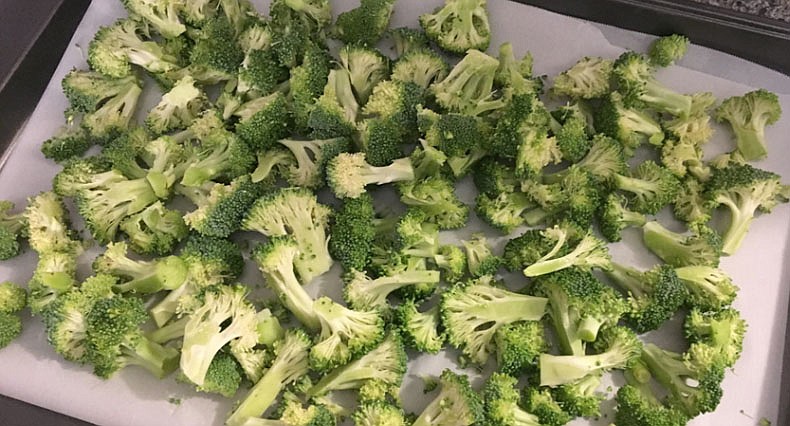Super or not so super? The concept of "super foods" has captured the interest and imagination of consumers for years. Instead of focusing on specific and individual foods as magic bullets, try to view the beneficial components as one part of a healthful diet and lifestyle.
Ultimately, the most important aspect related to good health is a dietary pattern that includes a wide variety of nutritious foods and regular physical activity. With this being said, I have comprised a list of "super foods" taking into consideration reasonability, regional and economical aspects. Now we will go through the first five of 10 on the list. Look for the next five in a future article. I think you will see as we go through this list that these particular foods are widely available, light on the pocket book when in season if applicable and most of them, I would bet, you have heard of and may already consume on a regular basis.
A healthy diet incorporating a variety of these foods will help you maintain your weight, fight disease and promote that overall sense of well-being. These foods are nutrient dense - meaning they pack a lot of punch for their weight as far as goodness goes. They are superior sources of anti-oxidants and essential nutrients, which are nutrients we need but cannot make ourselves.
Plain Greek yogurt: It is a great source of calcium than some other dairy products. It is a good source of protein and potassium. It can be used as a great "vehicle" for others like berries/nuts. I suggest you look at the ingredient list for any "hidden" ingredients and try to purchase ones with the least amount. Feel free to add your own fresh, frozen or dried fruit and/or nuts to control the sweetness and calories. It is a great substitute for sour cream, as well.
Nuts: Nuts are a good source of protein, heart-healthy fats, high in fiber and antioxidants. They can help "fill you up" or satiate you. Nuts can add texture and flavor to salads, side dishes, baked goods, cereals and entrees. They taste great alone, too. One of my all-time favorites snacks remains an apple with an ounce of raw almonds. Try creating your own individualized nut snack bags to help control the portion. Caution when purchasing nuts to look for added ingredients and preservatives.
Beans: White, red, black, navy, garbanzo or butter beans - this list does not include prepared baked beans (typically loaded with sodium, sugar and fat) or green beans (considered a non-starchy vegetable). Beans are chocked-full of cholesterol-lowering fiber and are good sources of protein, carbohydrates, folate, iron, magnesium and potassium. They are inexpensive and very versatile. You can substitute many recipes including various meats and poultry with beans and add to salads, stews, casseroles and eggs dishes. I suggest if you use canned beans to always drain and rinse prior to using.
Broccoli: Broccoli is one of America's favorite vegetables because it tastes good and is available all year long. I figured I should include a bit on broccoli as I have written an entire article on cauliflower alone; the broccoli was jealous! It is a rich source of vitamins A, C and K as well as having plenty of fiber to help fill you up. Some think that vitamin A or beta-carotene is only found in orange and yellow vegetables, but broccoli is an excellent source of vitamin A. Color is key when choosing broccoli. The greener the broccoli is, the more beta-carotene it has. Look for broccoli that is dark green or even purplish-green, but not yellow. Florets should be compact and of even color; leaves should not be wilted; and stalks should not be fat and woody. Keep broccoli cold. At room temperature, the sugar in broccoli is converted into a fiber called lignin, which is woody and fibrous. Store unwashed broccoli in your refrigerator's crisper drawer, in a plastic bag. Do not completely seal the bag, but make sure it is tight. Use within a few days.
Sweet potatoes: Not only do sweet potatoes taste like dessert, this root vegetable is qualified as an excellent source of vitamin A (in the form of beta-carotene), a very good source of vitamin C and manganese, and a good source of copper, dietary fiber, vitamin B6, potassium and iron. Choose sweet potatoes that are firm and do not have any cracks, bruises or soft spots. Avoid those displayed in the refrigerated section of the produce department since cold temperature negatively alters their taste. Sweet potatoes should be stored in a cool, dark and well-ventilated place, where they will keep fresh for up to 10 days. Ideally, they should be kept out of the refrigerator not above 60 degrees, which would fit the characteristics of a root cellar. Yet since most people don't have root cellars, I suggest just keeping your sweet potatoes loose (not in a plastic bag) and storing them in a cupboard away from sources of excess heat (like the stove).
Denise Coots, RD, LD, CNSC is the clinical nutrition coordinator at SSM Health, St. Mary's hospital in Jefferson City. She has a passion for helping others ranging from those patients in the intensive care unit to individuals in the community with various dietary issues.


